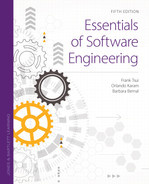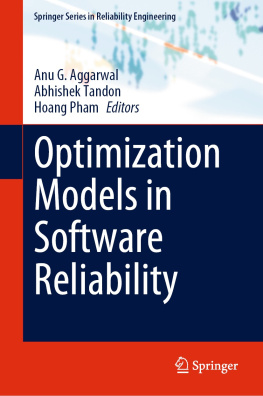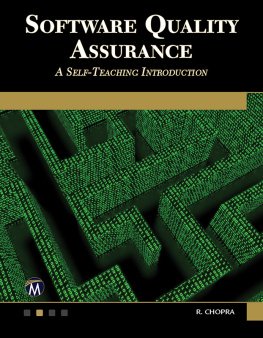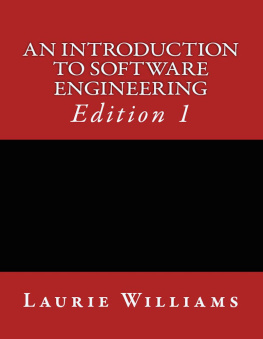Software Engineering Fundamentals
Copyright 2020
All rights reserved.
ISBN-:
S oftware Engineering Fundamentals is distinctive in its reportage of such subject matters as real-time software design, software metrics, reliability, planning, testing and integration, cost and schedule estimation, human factors, process sizing, quality assurance, technical management, and risk management.
If one takes a look regressively back and indulge into more abstract and theoretical facades of some of the programming language, he may find two reasons to get familiar with it. Initially, these factors almost always dictate critical decisions as to what instruments to use and when to implement. People don't intend to engage in using the inaccurate technology for a piece of work, provided they are devoting themselves to create a large software platform. Besides, tools that are different can keep taking considerable time to settle down. If one has to opt for a new device that is radically different from what he is accustomed to, comprehending the basic principles will ensure a smooth transition.
A detailed overview of software engineering and its style of operation is quite inherent in Software Engineering Fundamentals, which draws knowledge acquired through practice. It directs engineering aspirants towards a more profound comprehension of a plethora of disciplines, assignments, and specialties that correspond to the software product innovation. The message is intended for both professionals and students alike and tends to follow the entire life cycle of software advancement, including extensive coverage of principles, guidelines tools, and methods. Software Engineering Fundamentals is distinctive in its representation of subjects including software analytics, reliability, technical management, risk management, cost and schedule calculation, real-time software design, quality control, preparation, testing, and development human factors and process size. It tries to establish the idea of software design as a phase of software and engineering as an engineered product. It explains software development as a team-driven execution usually performed in the context of the development of a system.
The technique of implementing software parameters (metrics) to quantify the software product properties as a way of evaluating and monitoring the development approach is implemented. Software benchmarks are provided as a management device, and the software development methodology is defined as an overview using an agreed analysis and reporting framework. So, several interim software engineering system products are mentioned in sufficient detail to allow the viewer to make a legitimate draft of those products. While promoting the use of modeling techniques for the measurement of sizes, costs and schedules, risk assessment, real-time design, and reliability, the studies have emphasized a need to calibrate templates with actual data. For practically every assignment that a software engineer can be allocated, explicit support is provided, and realistic case studies and explanations are comprehensively used to strengthen the displayed topics. Software Engineering Fundamentals presents a different blend of both practical as well as theoretical conduct of software engineering lessons for students and professionals alike.
Over the years, a multitude of such structures have emerged, each with its own identified merits and demerits. One software development approach structure does not inherently suit all projects. The approach systems available are ideally suited to particular types of projects, depending on distinct technological, organizational, project, and team deliberation. To facilitate the development process, software development organizations implement process technicalities. Consultants may also need methodologies to be employed, an illustration being the U.S. defense sector, which requires a ranking based on process templates for obtaining contracts. ISO / IEC 12207 conforms to the international standard for defining the process of choosing, enforcing, and tracking the software life cycle. An extended period objective has been to find replicable, consistent processes that improve both quality and efficiency.
Some are attempting to formalize or systematize the often undisciplined process of software design. Someone else applies the techniques of project management to software development. In terms of delivery schedule, functionality, or cost, a majority of software projects do not fulfill one's expectations. Organizations can initiate the focal point for improving processes by developing the Software Engineering Process Group (SEPG). The group is at the center of the collaborative efforts of everyone in the organization involved in the process improvement of software engineering, which is consisted of line practitioners with varied skill sets. A unique project team may also concur into environment details programming with an integrated development environment that is being implemented, and even more than one dominant programming style, programming paradigms, or choice of specialized software libraries or software systems. Usually, these details are not governed by model choice or widely applied techniques.
During her work on the Apollo program, Margaret Hamilton elevated the term software engineering . The term engineering had been used to indicate that the research should be regarded just as strictly as other efforts towards technological development. During her maiden awareness with the term, she discovered that nobody had noticed until then, all across the globe. It has long been an ironic theme. People quite enjoyed making fun of her as regards her radical views. It was a momentous day when one of the most revered hardware experts clarified to a group of audience in a gathering that he consented with Hamilton that the phase of building software must also be regarded as an engineering discipline as considered with hardware. Not because he accepted the new "term" as an integral part, but it had accrued his and the affirmation of other members present in the room that specifically belonged to the engineering field.
An individual can be in a debating mood and argue that software engineering signifies a kind of academic drill down, adherence to formal processes, professional discipline, and notably legal responsibility that are not frequently applied in software development scenarios. A simple assumption is that continuing to work in building projects does not end up making one a civil engineer, and, therefore, writing code does not make one a virtual software engineer. In addition, since computing does not promote the mathematics and physics connectivity in tandem, which is common to all standard engineering fields, it is more accurate to consider those involved in this profession as software developers or the like. In the year 1978, E. W. Dijkstra, a computer scientist, stated in a report that it was not beneficial to rephrase the term software engineer since it was an improper analogy. The presence of the simple term was the basis of a host of extremely subsurface and incorrect assumptions, which merely misrepresent the matter. Computers are such excellent devices that it is fair to conclude that most comparisons with other disciplines are too superficial to be of any significant interest, and these are even so shallow that they are just misleading.
Next page














